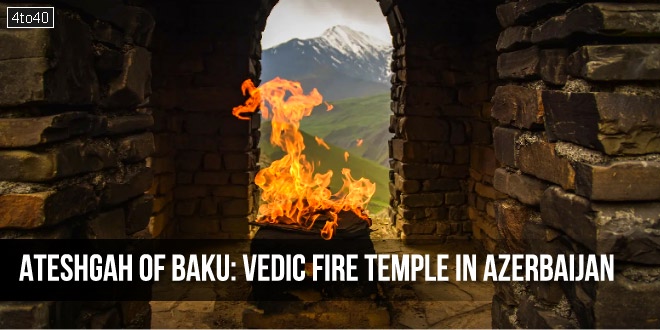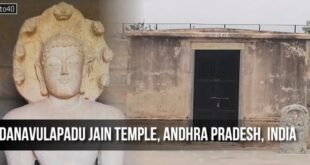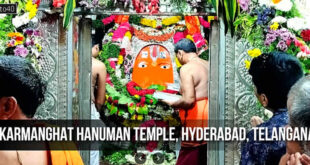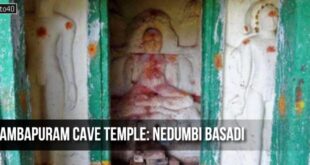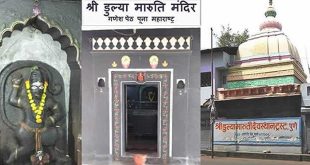The Ateshgah of Baku, often called the “Fire Temple of Baku“, is a castle-like religious temple in Surakhany town (in Surakhany raion), a suburb in Baku, Azerbaijan.
Vedic Fire Temple in Azerbaijan: Civilisational heritage and the unceasing continuity of Vedic culture even outside Bharat
The inscriptions found there embody compositions in Sanskrit, Gurmukhi, and Farsi. The Sanskrit inscription presents salutations to Lord Ganesh and Shiva and venerates the holy fire Javalaji. The Hindu hermits, traders, and devotees used to visit this place quite frequently and perform their puja. This is established through the Hindu motifs and symbols found on the fortress walls.
Ateshgah of Baku
| Name: | Ateshgah of Baku; Fire Temple of Baku; |
| Location: | Surakhani, Baku, Azerbaijan |
| Deity: | Lord Ganesha, जवालाजी |
| Affiliation: | Hinduism, Sikhism, Zoroastrianism |
| Type: | Ancient Syncretic (Zoroastrian/Hindu) Fire Temple |
| Architectural Style: | Shirvan-Absheron architectural school |
| Completed In: | – century |
The existence of a fire temple called Ateshgah of Baku at Surakhani, Azerbaijan, speaks significantly of the civilisational heritage and unceasing continuity of Vedic culture of fire worship even outside Bharat. The genesis of this Vedic culture goes back to the time of the migration of Vedic people from the Indus Valley. Contrary to the subjective claims of colonial scholarship that promoted the Aryan migration theory from Central Asia to Bharat, the trifurcation of migrating Vedic people took place from the Indus Valley in three different directions.
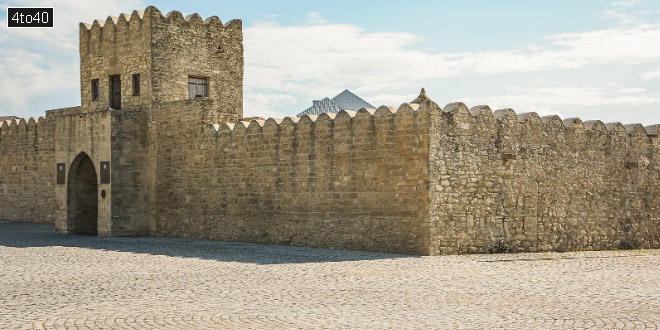
They migrated to the east till Sadanira in Bihar, to the north to Azerbaijan, known in antiquity as Airyana Vaejo, and to the Middle East establishing the Hittite culture. These migrations took place around 2000-1880 BCE when the Indus culture and topography were impacted by natural calamities. As substantiated in the book, The Vedic Entities and Identities (The Oriental Institute Vadodara 2012), the Indus Culture was an integral part of the Vedic Culture. They carried with them the most advanced Vedic culture which found no equivalent anywhere then. The migration of Vedic people northward coursed through Afghanistan, Iran, and then to Armenia and Azerbaijan.
This migration from the Indus Valley on a significant scale also accompanied the Vedic culture, philosophy, metaphysics, knowledge, rich rituals and worldview. The migratory progress it made in the Central Asian region left remarkable cultural footprints that built in the process foundations of several systems of culture, knowledge, rituals, and customs. The cultural treasures that it handed over had an incredible receptivity from the regions the Vedic people covered. The Vedic worldview of inclusivity, universal well-being, mutual respect, the spirit of inquiry and integration. Most importantly the concepts of the world as one family (Vasudhaiva Kutumbakam) and the dharmic consciousness contributed to the formation of civilisations. Therefore, it is not a matter of surprise to find the existence of Vedic myths, such as dragon killing, cultural practices, and the relics of the monuments that embody the memory of a rich Vedic past in Azerbaijan.
Baku is the capital city of Azerbaijan. It is located on the Caspian Sea shore in the west. Close to Baku, around forty kilometers northeast, there are sacred sites namely Yanerdag and Surakhani easily accessible by road. In Yanerdag, on a hilltop, a sacred fire is burning from a very remote antiquity whose ancestry is difficult to determine but is considered to be a Zoroastrian sacred pilgrimage where relics having strong Avestan cultural connections were unearthed during archaeological excavations.
At the bottom of the hill, a fire burns continuously extending over a length of about fifteen meters. The archaeological remains found near the site present the images and motifs of the Zoroastrian fire and sun worship. The sun disc and Afrinagan pot used by Zoroastrians are carved on the stone slab confirming the Zoroastrian past as the region has seen Persian rule in remote antiquity. The main reason for the Avestan people to arrive at Yanerdag and Surakhani was their search for sacred fire because of Angraminyu’s constant defilement of the sacred land created by Ahura Mazda. Angraminyu in Avestan literature is a destructive evil spirit and an antithesis to virtues and goodness Ahura Mazda stands for. The migration northward in search of undefiled space culminated in Azerbaijan which is Airyana Vaejo in Avestan literature.
The fire temple at Surakhani (Ateshgah of Baku) is called Jwalaji temple. The temple today is more of a fortress. At the center, there exists the sanctum sanctorum. There is a fire altar with a stone structure and typically a Yajnavedi where the fire burns constantly. The fortress-like structure having inner and outer courtyards is located on a plateau.
The inscriptions found there embody compositions in Sanskrit, Gurmukhi, and Farsi. The Sanskrit inscription presents salutations to Lord Ganesh and Shiva and venerates the holy fire Javalaji. The Persian inscription also refers to fire. It was once a very significant center of Hindu and Zoroastrian pilgrimage. The Hindu hermits, traders, and devotees used to visit this place quite frequently and perform their puja. This is established through the Hindu motifs and symbols found on the fortress walls.
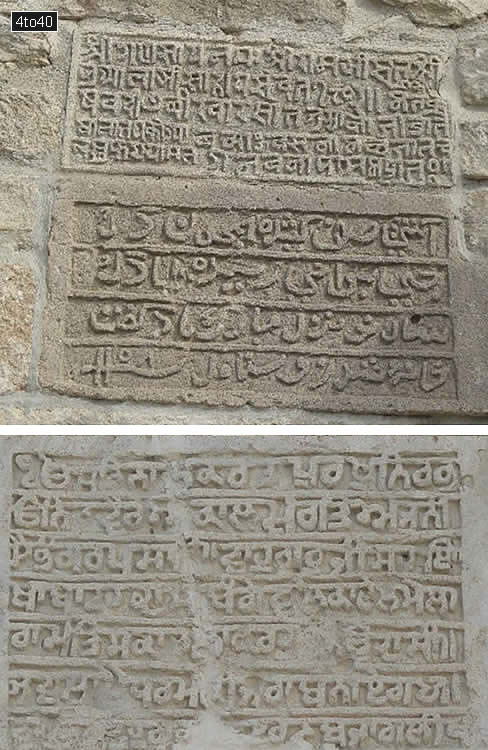
Archaeological discoveries consolidate the Vedic connection with fire worship tradition. The Hindu priests used to visit this place until the end of the 19th century and over a century there seems no footfall of Hindus to this sacred site. The same is also true of the Zoroastrians who have stopped visiting the place. However, the offerings of pomegranate to the fire remain vaguely present in the folk memory of the locals there. The locals are of the opinion that the offerings given to the fire were largely pomegranate juice and branches. The concepts of fire god and offerings to the fire are essentially an integral part of the Vedic and Zoroastrian cultural and ritual practices.
Their continuity in Azerbaijan indicates the depth and extensiveness of Vedic culture and the certitude of migration from the Indus Valley to the north contrary to the colonial version of the Aryan Invasion. Dr. I N Aliev, an archaeologist who works in the Department of Archaeology, Baku, has done extensive excavations at Surakhani and confirms the discovery of the relics having shared Hindu and Avestan ancestry. Dr. Aliev also believes that his forefathers came from Bharat. This affirmation also opens up the scope of ancient Bharat’s deep connection with Azerbaijan and the region therein. There stands a centuries-old caravanserai in Baku built with Indian patronage.
A great deal of research is, therefore, required to be done to unearth the buried truths and assets of Vedic culture and its antiquity, historicity, and continuity both in Armenia and Azerbaijan. The development of a contradicting theological culture with rigid monotheism in Azerbaijan has unsettled the story of Vedic and Zoroastrian cultural continuity but time has come to recognise the Vedic heritage of Bharat and its outreach. The mood of the country today is to reach the root to form an enduring identity decoupled from colonial determinisms. The presence of Vedic cultural practices or relics of those monuments of Vedic cultural significance outside Bharat presents an opportunity to map the cultural extendedness of the Indus and Saraswati civilisation.
This article has been co-authored by Dr. Chandan K. Panda – an Assistant Professor in the Department of English at Rajiv Gandhi University (A Central University), Itanagar.
15 facts about Ateshgah, Baku fire temple where Sushma Swaraj paid homage
What is the history of this temple? How did a fire temple with salutations to Hindu gods emerge in this predominantly Muslim Central Asian country located on the western side of the Caspian Sea?
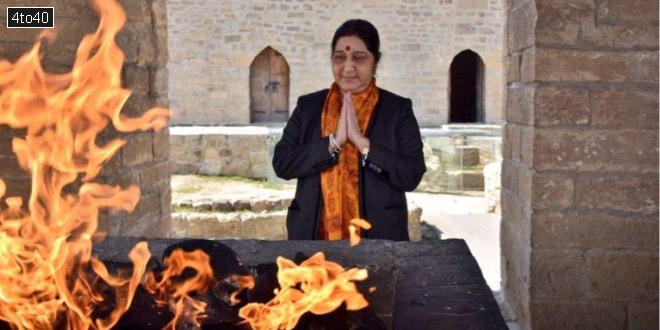
- The town where the temple is located is called Surakhani (Ateshgah of Baku), which in Tat language means ‘hole with the fountain’. The Tat language is a form of Persian spoken by the Tat people around the Caspian Sea.
- At the site, Ateshgah, there were several holes from which natural fires sprouted through. The word ‘Atesh’ means fire in Persian and ‘Gah’ means bed. Ateshgah once had a natural gas field underneath, which was the reason behind the natural fires.
- That the site was considered holy has been attributed by many historians, including the 7th century Armenian geographer Anania Shirakatsi in his book Ashkharatsuyts.
- Zoroastrians were the primary worshippers at the site. The region was at the time a part of the Persian Empire under Sasanian dynasty before its fall to Islamic invasion in 7th century. According to one source, the a mention of “Seven sacred fire holes” built by Shah Ardashir I (227-241) was made by Armenian scholars.
- Though the region came under the influence of Islam, the Zoroastrians probably did not completely disappear. Noted 10th century geographer Abu Ishaq Ibrahim ibn Muhammad al-Farisi al-Istakhri (popularly known by his mononym Estakhri) wrote that ‘fire worshippers’ lived not far from Baku in a place what is now known as Ateshgah.
- But it was in the 18th century that Hindus, Sikhs and Zoroastrians started arriving in the area in larger numbers.
- The Hindus arrived because of trade. The region fell along one of the many prominent trade routes connecting Indian sub-continent to the West through Central Asia.
- Construction of the temple as it stands today began after the Hindus arrived, which is sometime in the late 17th or early 18th century. European travellers and historians documented the presence of Hindus, Sikhs and ‘Parsis’ (Zoroastrians) from around 1683 to 1880.
- There are 14 Sanskrit, two Punjabi and one Persian inscription in the Ateshgah. The only Persian inscription has grammatical errors.
- Of the two Sanskrit inscriptions, one mentions Lord Ganesha and Jwala ji while the other is an invocation to Lord Shiva. The inscription mentioning Lord Shiva has motifs of Sun and swastika.
- According to Abraham Valentine Williams Jackson’s ‘From Constantinople to the home of Omar Khayyam’, the inscriptions were carved between 1668 and 1816 AD.
- Parsi priests were sent to the region from India till 1880. In 1925, a Parsi priest named Dr. Sir Jivanji Jamshedji Modi visited Ateshgah and concluded that the temple was Hindu in character yet later evidences did not rule out the place’s Zoroastrian origin.
- The flame used to burn naturally till 1969 till rampant gas extraction by the Soviets emptied the reserves.
- The fuel for the fire that now burns is fed from a gas pipeline coming all the way from Baku.
- Ateshgah was listed as a World Heritage Site by UNESCO in 1998.
 Kids Portal For Parents India Kids Network
Kids Portal For Parents India Kids Network
